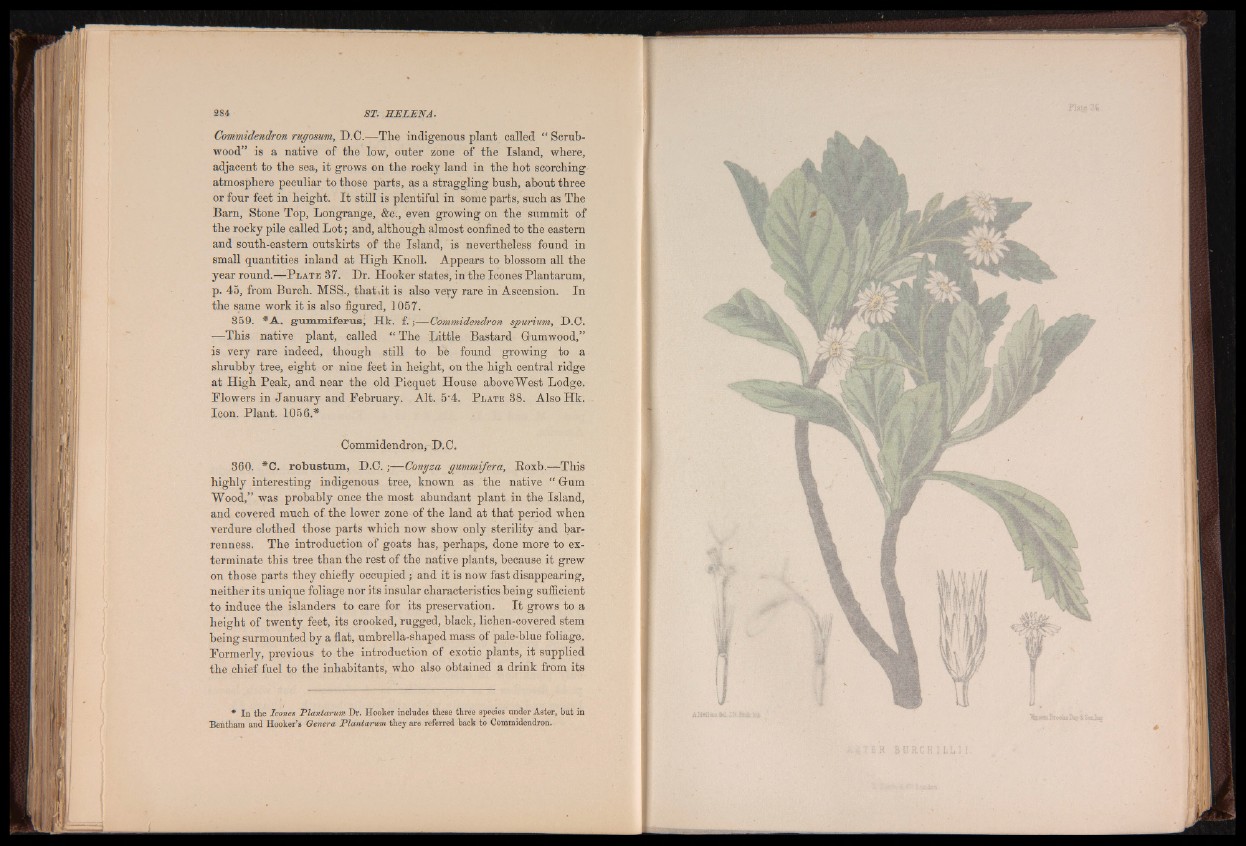
Commidendron rugosum, D.C.—The indigenous plant called “ Scrub-
wood” is a native of the low, outer zone of the Island, where,
adjacent to the sea, it grows on the rocky land in the hot scorching
atmosphere peculiar to those parts, as a straggling bush, about three
or four feet in height. I t still is plentiful in some parts, such as The
Barn, Stone Top, Longrange, &e., even growing on the summit of
the rocky pile called L o t; and, although almost confined to the eastern
and south-eastern outskirts of the Island, is nevertheless found in
small quantities inland at High Knoll. Appears to blossom all the
year round.—P late 37. Hr. Hooker states, in the leones Plantarum,
p. 45, from Burch. MSS., th at.it is also very rare in Ascension. In
the same work it is also figured, 1057.
3 5 9 . *A. gummiferus, Hk. f. Commidendron spurium, D.C.
»—This native plant, called “ The Little Bastard Gumwood,”
is very rare indeed, though still to be found growing to a
shrubby tree, eight or nine feet in height, on the high central ridge
at High Peak, and near the old Picquet House aboveWest Lodge.
Flowers in January and February. Alt. 5 ’4 . P la t e 3 8 . Also Hk.
Icon. Plant. 1056.*
Commidendron, D.C.
360. *C. robustum, D . C .—Conyea gummifera, Roxb.—This
highly interesting indigenous tree, known as the native “ Gum
Wood,” was probably once the most abundant plant in the Island,
and covered much of the lower zone of the land at that period when
verdure clothed those parts which now show only sterility and barrenness.
The introduction of goats has, perhaps, done more to exterminate
this tree than the rest of the native plants, because it grew
on those parts they chiefly occupied ; and it is now fast disappearing,
neither its unique foliage nor its insular characteristics being sufficient
to induce the islanders to care for its preservation. I t grows to a
height of twenty feet, its crooked, rugged, black, lichen-covered stem
being surmounted by a flat, umbrella-shaped mass of pale-blue foliage.
Formerly, previous to the introduction of exotic plants, it supplied
the chief fuel to the inhabitants, who also obtained a drink from its
* In the leones Plantarum Dr. Hooker includes these three species under Aster, but in
Bentham and Hooker’s Genera Plantarum they are referred back to Commidendron.